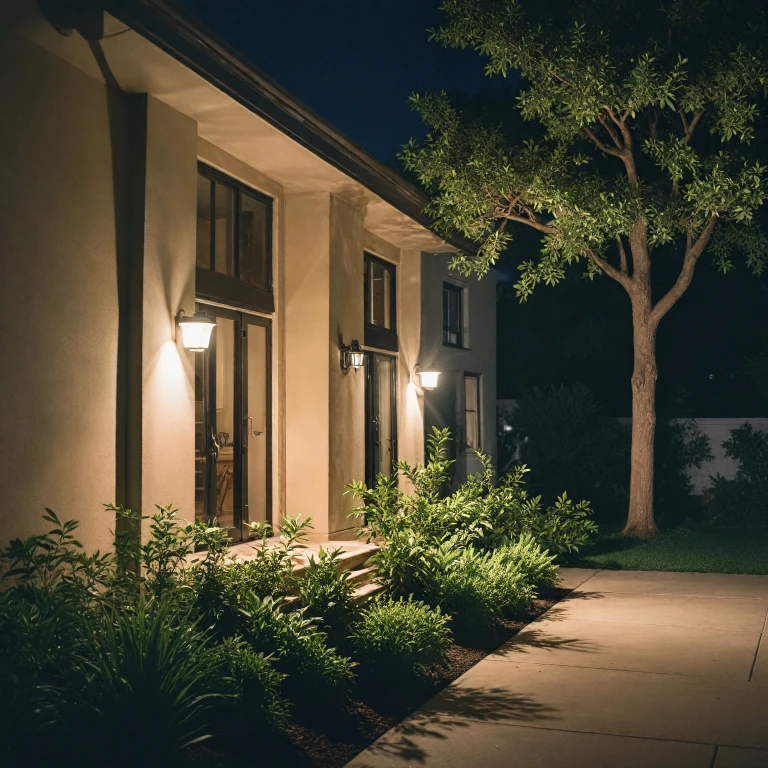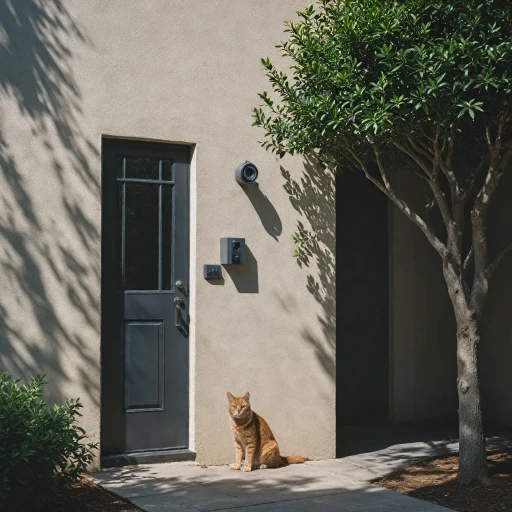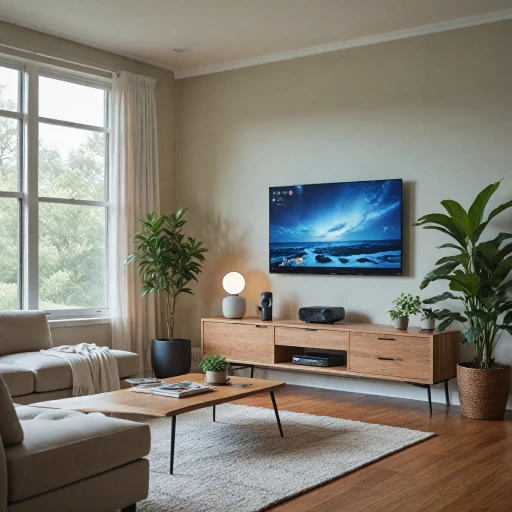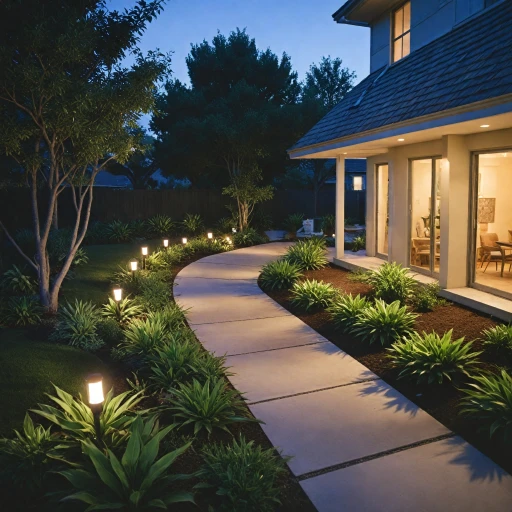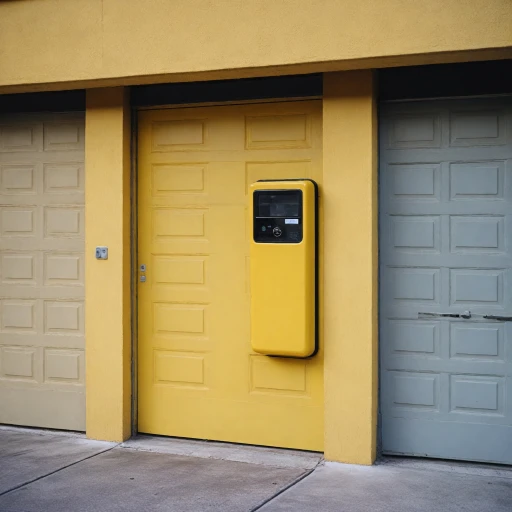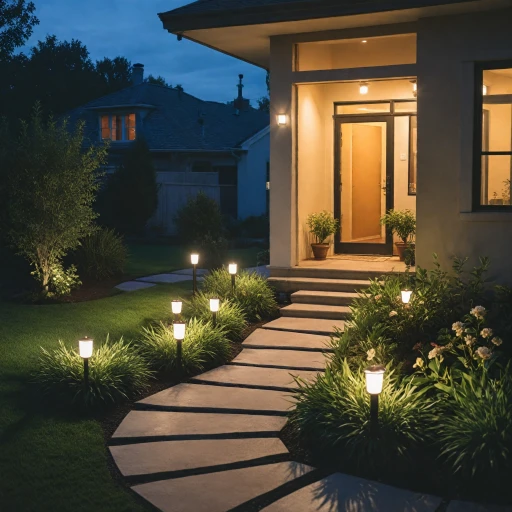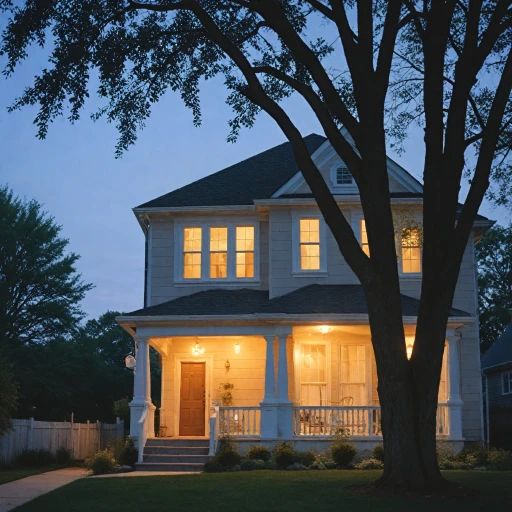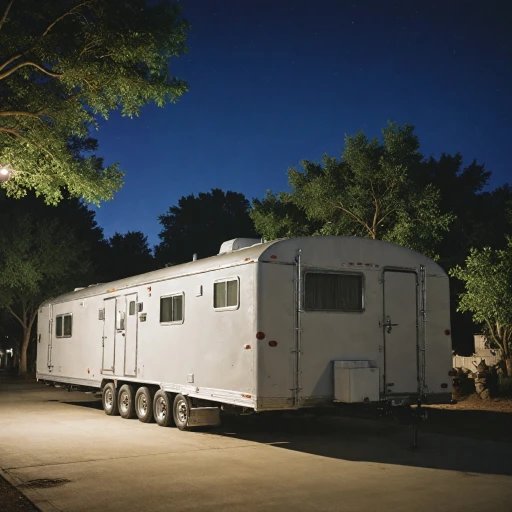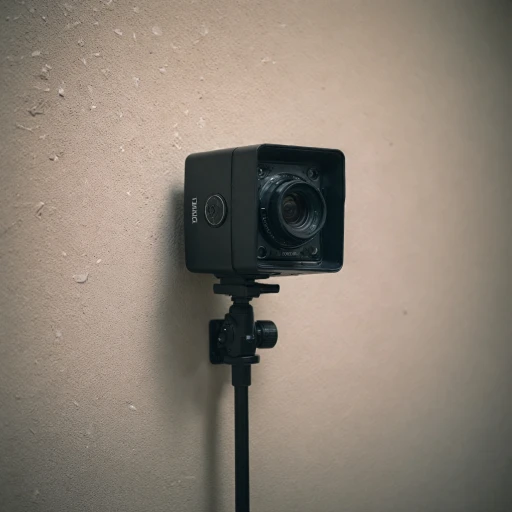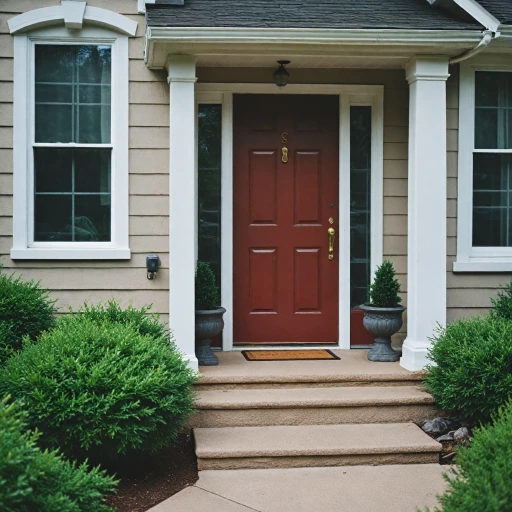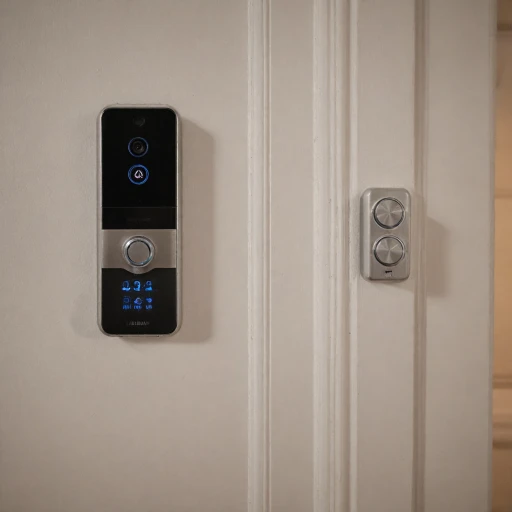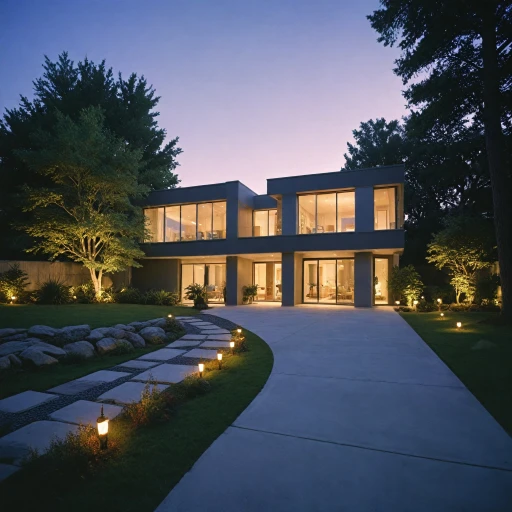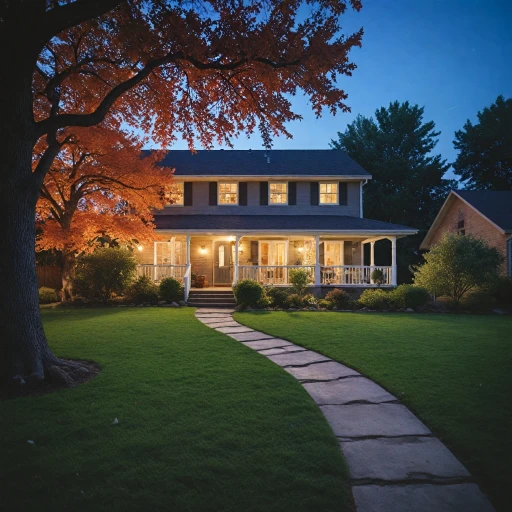
Understanding Night Vision Technology
The Mechanism Behind Seeing in the Dark
If you've ever wondered how night vision cameras seem to see in the dark, it's all about the technology inside them. Night vision security cameras use specialized components to enhance visuals in low light or complete darkness. There are two primary technologies at play: infrared (IR) illumination and low light imaging. IR illumination involves infrared LEDs that emit light invisible to the naked eye but detectable by the camera sensors. This light bounces off objects in the environment, allowing the camera to capture a clear video feed, often appearing in monochrome rather than full color. The best systems utilize a mix of these infrared lights alongside advanced sensors to maintain optimal viewing regardless of the lighting conditions. On the other hand, low light cameras rely on highly sensitive CCD or CMOS image sensors designed to operate efficiently with minimal ambient light. Combined, these allow for capturing video even in poorly lit conditions. Some advanced cameras go further by integrating thermal imaging, though this feature is more commonly found in high-end systems. These night vision capabilities are crucial for ensuring home security around the clock. They offer peace of mind knowing your property's monitored day and night. The integration of IR illuminators for home security cameras can significantly enhance these abilities and ensure your night vision cameras offer the best surveillance, regardless of external light challenges. Other sections will delve into the benefits and features that make these night vision cameras essential elements of any comprehensive security strategy.Benefits of Night Vision Security Cameras
Advantages of Implementing Night Vision Cameras
Integrating night vision security cameras into your home security system provides numerous benefits. Here’s a closer look at how these advanced cameras can enhance your security measures:- Improved Visibility in Low Light Conditions: Night vision cameras leverage infrared technology to capture clear images, even in complete darkness. This makes it possible to monitor your home 24/7 without the need for additional lighting.
- Color Night Vision Capabilities: Many modern cameras offer color night vision, which provides enhanced detail and clarity over traditional black-and-white night vision. This can be particularly useful for identifying people or objects.
- Proactive Security: Night vision cameras work seamlessly with motion detection systems to notify homeowners of any unusual activity. When combined with motion alerts, these cameras ensure you're immediately aware of any threats.
- Enhanced Outdoor Monitoring: Cameras equipped with night vision are ideal for outdoor surveillance. They can cover large areas, and some models include features like pan, tilt, and zoom to offer a comprehensive view of your surroundings.
- Advanced Features: Look for cameras with integrated features such as audio recording, which can provide valuable context to video footage. Additionally, systems that offer both local storage and cloud storage give users flexibility in how they manage their data.
- Smart Home Compatibility: Night vision security cameras often integrate with smart home systems like Alexa and Google. This allows for seamless operation and accessibility, letting you monitor streams directly from your smart device.
Key Features to Look for in Night Vision Cameras
Essential Factors for Selecting the Perfect Night Vision Security Camera
Choosing the best night vision security camera for your home involves more than just looking for one that can capture images in low light. To ensure you're investing in a security system that meets your needs, consider the following key features.
- Resolution: Look for cameras that offer high-definition video capture to ensure you can clearly identify any intruders. 1080p is a standard resolution, but higher resolutions like 4K provide even greater detail in your recordings.
- Color Night Vision: This feature allows you to see full-color images in low light, which can be particularly useful for identifying details. Cameras with color night vision often perform better than traditional infrared cameras in providing clearer and more precise footage during nighttime surveillance.
- Infrared Light: Cameras with infrared capabilities can record video even in complete darkness. Consider exploring options like infrared lights for enhanced night vision performance.
- Motion Detection: Many night vision cameras come equipped with motion sensors, allowing them to start recording only when motion is detected. This feature is crucial for conserving storage and ensuring you capture important moments.
- Audio Capabilities: Security cameras with audio features, whether one-way or two-way, allow for added security by enabling communication with individuals on your property.
- Weatherproof Design for Outdoor Use: If you plan to install cameras outdoors, ensure they are weather-resistant and built to withstand various environmental conditions.
- Smart Home Integration: Consider cameras that work with popular smart home systems like Alexa and Google Assistant for seamless integration and control.
- Storage Options: Decide between cloud storage and local storage based on your preference for accessibility, security, and budget. Some brands offer flexible plans that might include a monthly fee for additional features.
- Pan Tilt and View Features: Cameras with pan, tilt, and zoom capabilities allow you to cover a wider area and focus on particular spots as needed.
- Integrated Spotlight: A spotlight camera can offer added security by illuminating the area when motion is detected, acting as a deterrent to potential intruders.
By prioritizing these features, you'll find a camera system that not only meets your security needs but also integrates seamlessly into your home. For more tips on enhancing your home security system, consider looking into automatic light switches to complement your night vision cameras.
Installation Tips for Optimal Performance
Optimal Positioning for Maximum Visibility
To ensure your night vision security cameras are capturing the best footage, positioning them strategically is crucial. Begin by evaluating the area you intend to monitor. Identify the key entry points and areas where movement is frequent. Cameras with pan tilt features provide broad coverage and can be adjusted remotely, offering flexibility in capturing different angles.Understanding Lighting Conditions
When installing night vision cameras, consider the lighting conditions of your environment. For outdoor cameras, try to place them in areas where streetlights or porch lights do not obscure or wash out the infrared light. Infrared light is essential for capturing video in low-light conditions, ensuring even color night footage is clear.Secure Mounting and Placement
Security cameras need robust and secure mounting to protect them against tampering or environmental factors. Whether installing outdoor cameras on a wall or positioning a nest cam on a shelf, ensure that the mount is stable and the cameras are out of easy reach but still able to capture clear video.Consideration for Audio and Video Output
If your cameras come with audio capabilities, install them in areas where audio quality will not be compromised by background noise. This ensures you receive clear and precise audio along with your video feed, enhancing the effectiveness of motion-activated alerts.Choice of Storage Options
Think about how the video footage will be stored. Whether you opt for local storage or cloud storage systems, ensure your choice aligns with your privacy preferences and security requirements. Some camera systems work with Alexa Google integration and offer seamless storage solutions, enhancing the overall system's usability.Regular Maintenance and Software Updates
Maintenance extends beyond the initial setup. Ensure your security cameras are updated with the latest software to resolve any glitches and enhance performance. This is particularly important for cameras with advanced features such as activity zones, which rely on up-to-date software to function optimally month after month. Incorporating these tips will help ensure that your night vision security camera system provides comprehensive and reliable monitoring, keeping your home secure both day and night.Comparing Popular Night Vision Camera Models
Evaluating Top Night Vision Camera Models in the Market
When considering the installation of night vision security cameras, it's essential to compare popular models to determine which best fits your needs. Here, we'll take a look at some standout options that offer a variety of features and functionalities.- Nest Cam with Battery: This model stands out for its integration with Google ecosystem allowing for seamless connectivity with other smart home devices. The Nest Cam offers enhanced night vision capabilities and real-time notifications. Its design is weather-resistant, making it suitable for outdoor use, and its video storage options include cloud solutions, albeit with a subscription.
- Ring Spotlight Camera: Known for its spotlight feature that activates upon detecting motion, this camera provides clear visibility even in low light conditions. It also offers two-way audio, making it possible to communicate with visitors. The spotlight cam is compatible with Alexa, adding to its convenience and operability in smart home systems.
- Arlo Pro 4: This camera system is equipped with full-color night vision, enabled by dual integrated spotlights. Its audio and video qualities are exceptional, providing high-resolution footage. For storing data, Arlo provides both local and cloud storage options, though the latter may require a subscription fee.
- Wyze Cam v3: A budget-friendly option, Wyze Cam v3 offers impressive color night vision and customizable settings for activity zones. The cam's motion detection is highly sensitive, providing alerts that can be tailored via the app. While it has local storage using a microSD card, it supports cloud storage with a monthly subscription plan.
Troubleshooting Common Issues
Tackling Common Night Vision Camera Issues
Navigating common issues with night vision security cameras ensures they work efficiently, providing peace of mind. Here is a glance at typical challenges and how to address them:
- Poor Video Quality in Low Light: If your camera's video appears grainy or unclear in low light, check if the camera has infrared capabilities or color night vision. Adjusting the settings for clarity can enhance performance.
- Interference with Infrared Light: Occasionally, infrared light from night vision cameras can cause glare. Testing different placement and viewing angles can help reduce this problem, ensuring a clear video view.
- Connectivity Issues: Night vision security cameras connected to systems like Alexa Google rely on stable Wi-Fi. Ensure a strong connection to prevent interruptions or delays in video or audio.
- Storage Concerns: Whether utilizing cloud storage or local storage, assess the best options for your needs. Cameras with video storage options allow for reviewing footage if needed.
- Motion Detection Sensitivity: Understanding activity zones and adjusting sensitivity settings can help decrease false alerts during the night.
By taking these steps, you can better troubleshoot and optimize your night vision security cameras, ensuring your home remains protected at all hours.

